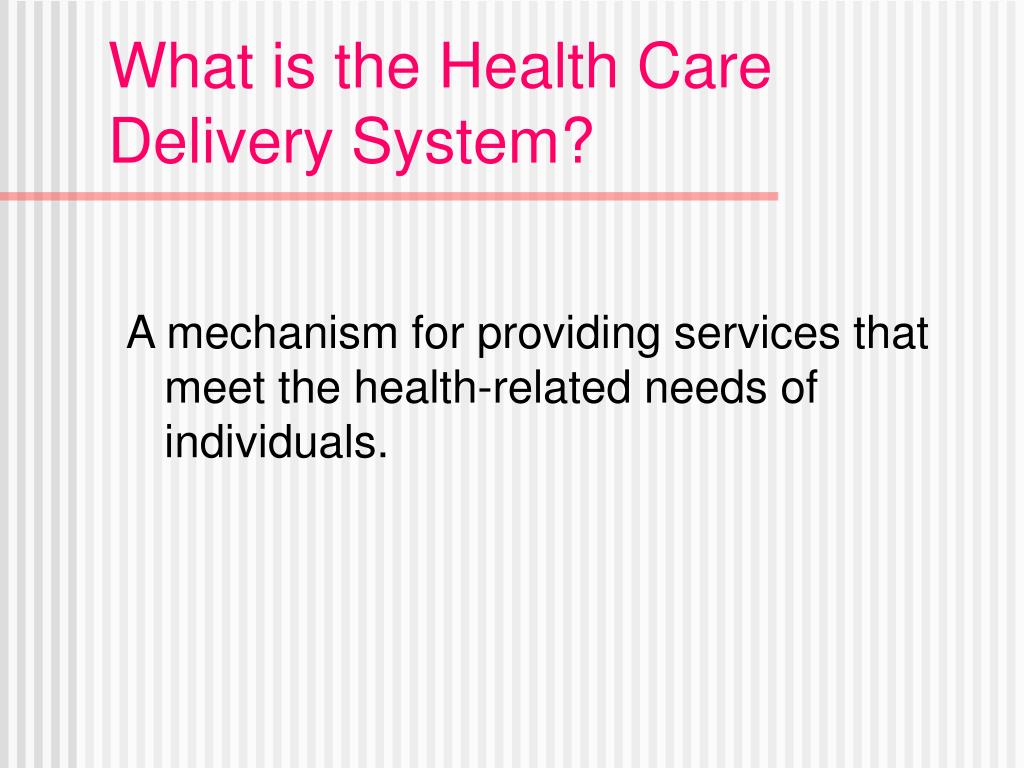This is based upon threat pooling. The social health insurance design is also described as the Bismarck Design, after Chancellor Otto von Bismarck, who presented the first universal healthcare system in Germany in the 19th century. The funds typically contract with a mix of public and private providers for the provision of a specified benefit bundle.
Within social medical insurance, a variety of functions might be executed by parastatal or non-governmental illness funds, or in a few cases, by personal health insurance companies. Social health insurance is utilized in a number of Western European nations and progressively in Eastern Europe in addition to in Israel and Japan.
Personal insurance coverage consists of policies offered by industrial for-profit firms, non-profit business and community health insurance companies. Normally, personal insurance is voluntary in contrast to social insurance coverage programs, which tend to be compulsory. In some nations with universal protection, private insurance frequently leaves out certain health conditions that are costly and the state healthcare system can offer coverage.
In the United States, dialysis treatment for end stage kidney failure is typically spent for by federal government and not by the insurance market. Those with privatized Medicare (Medicare Benefit) are the exception and should get their dialysis spent for through their insurance coverage business. Nevertheless, those with end-stage kidney failure generally can not purchase Medicare Benefit strategies - which of the following are characteristics of the medical care determinants of health?.
The Planning Commission of India has actually also suggested that the country ought to embrace insurance to accomplish universal health coverage. General tax income is presently used to fulfill the vital health requirements of all people. A specific form of private medical insurance that has actually typically emerged, if monetary risk protection systems have just a minimal effect, is community-based medical insurance.
Contributions are not risk-related and there is generally a high level of neighborhood participation in the running of these plans. Universal healthcare systems vary according to the degree of federal government participation in offering care or medical insurance. In some nations, such as Canada, the UK, Spain, Italy, Australia, and the Nordic nations, the federal government has a high degree of involvement in the commissioning or delivery of healthcare services and access is based on home rights, not on the purchase of insurance coverage.
In some cases, the health funds are stemmed from a mix of insurance premiums, salary-related obligatory contributions by employees or companies to controlled sickness funds, and by federal government taxes. These insurance coverage based systems tend to compensate personal or public medical suppliers, typically at greatly regulated rates, through shared or publicly owned medical insurance providers.
The Ultimate Guide To When Does Senate Vote On Health Care Bill
Universal health care is a broad principle that has been executed in a number of methods. The common measure for all such programs is some kind of government action focused on extending access to healthcare as commonly as possible and setting minimum requirements. A lot of execute universal healthcare through legislation, policy, and taxation.
Typically, some costs are borne by the client at the time of intake, but the bulk of expenses come from a combination of required insurance coverage and tax earnings. Some programs are paid for totally out of tax profits. In others, tax incomes are used either to fund insurance for the very bad or for those needing long-term persistent care.
This is a method of organising the delivery, and allocating resources, of healthcare (and potentially social care) based upon populations in an offered geography with a common need (such as asthma, end of life, immediate care). Instead of focus on institutions such as medical facilities, medical care, neighborhood care and so on the system focuses on the population with a common as a whole.
where there is health inequity). This approach motivates incorporated care and a more reliable use of resources. The United Kingdom National Audit Office in 2003 released a worldwide comparison of 10 various healthcare systems in ten established countries, 9 universal systems against one non-universal system (the United States), and their relative costs and crucial health results.
Sometimes, federal government participation likewise consists of straight handling the health care system, however many countries use combined public-private systems to deliver universal health care. World Health Organization (November 22, 2010). Geneva: World Health Organization. ISBN 978-92-4-156402-1. Retrieved April 11, 2012. " Universal health protection (UHC)". Obtained November 30, 2016. Matheson, Don * (January 1, 2015).
International Journal of Health Policy and Management. 4 (1 ): 4951. doi:10.15171/ ijhpm. 2015.09. PMC. PMID 25584354. Abiiro, Gilbert Abotisem; De Allegri, Manuela (July 4, 2015). " Universal health protection from numerous point of views: a synthesis of conceptual literature and global arguments". BMC International Health and Human Being Rights. 15: 17. doi:10.1186/ s12914-015-0056-9. ISSN 1472-698X.
PMID 26141806. " Universal health coverage (UHC)". World Health Organization. December 12, 2016. Retrieved September Alcohol Rehab Facility 14, 2017. Rowland, Diane; Telyukov, Alexandre V. (Fall 1991). " Soviet Health Care From 2 Viewpoints" (PDF). Health Affairs. 10 (3 ): 7186. doi:10.1377/ hlthaff. 10.3.71. PMID 1748393. "OECD Reviews of Health Systems OECD Evaluations of Health Systems: Russian Federation 2012": 38.
6 Simple Techniques For What Is Single Payer Health Care
" Social welfare; Social security; Benefits in kind; National health plans". The new Encyclopdia Britannica (15th ed.). Chicago: Encyclopdia Britannica. ISBN 978-0-85229-443-7. Recovered September 30, 2013. Richards, Raymond (1993 ). " Two Social Security Acts". Closing the door to destitution: the shaping of the Social Security Acts of the United States and New Zealand.

p. 14. ISBN 978-0-271-02665-7. Retrieved March 11, 2013. Mein Smith, Philippa (2012 ). " Making New Zealand 19301949". A concise history of New Zealand (2nd ed.). Cambridge: Cambridge University Press. pp. 16465. ISBN 978-1-107-40217-1. Obtained March 11, 2013. Serner, Uncas (1980 ). "Swedish health legislation: milestones in reorganisation considering that 1945". In Heidenheimer, Arnold J.; Elvander, Nils; Hultn, Charly (eds.).
New York: St. Martin's Press. p. 103. ISBN 978-0-312-71627-1. Universal and Take a look at the site here detailed medical insurance was discussed at intervals all through the Second World War, and in 1946 such an expense was voted in Parliament. For monetary and other reasons, its promulgation was postponed till 1955, at which time protection was encompassed consist of drugs and illness payment, too.
( September 1, 2004). " The developmental welfare state in Scandinavia: lessons to the developing world". Geneva: United Nations Research Institute for Social Advancement. p. 7. Obtained March 11, 2013. Evang, Karl (1970 ). Health services in Norway. English version by Dorothy Burton Skrdal (3rd ed.). Oslo: Norwegian Joint Committee on International Social Policy.
23. OCLC 141033. Because 2 July 1956 the whole population of Norway has been consisted of under the obligatory health nationwide insurance coverage program. Gannik, Dorte; Holst, Erik; Wagner, Mardsen https://b3.zcubes.com/v.aspx?mid=5246632&title=indicators-on-when-choosing-a-health-care-provider-you-should-know (1976 ). "Main healthcare". The national health system in Denmark. Bethesda: National Institutes of Health. pp. 4344. hdl:2027/ pur1.32754081249264. Alestalo, Matti; Uusitalo, Hannu (1987 ).

In Plants, Peter (ed.). Growth to limits: the Western European welfare states considering that World War II, Vol. 4 Appendix (run-throughs, bibliographies, tables). Berlin: Walter de Gruyter. pp. 13740. ISBN 978-3-11-011133-0. Retrieved March 11, 2013. Taylor, Malcolm G. (1990 ). "Saskatchewan healthcare insurance". Insuring national healthcare: the Canadian experience. Chapel Hill: University of North Carolina Press.
96130. ISBN 978-0-8078-1934-0. Maioni, Antonia (1998 ). " The 1960s: the political fight". Parting at the crossroads: the emergence of medical insurance in the United States and Canada. Princeton: Princeton University Press. pp. 12122. ISBN 978-0-691-05796-5. Obtained September 30, 2013. Kaser, Michael (1976 ). "The USSR". Healthcare in the Soviet Union and Eastern Europe.